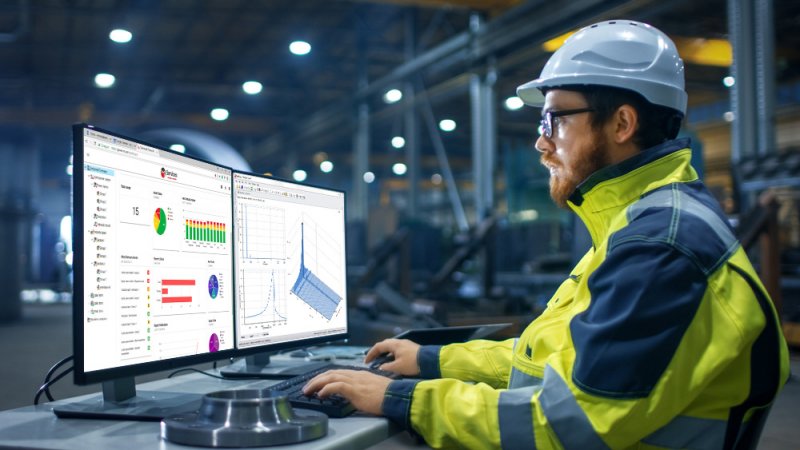
In a world increasingly driven by data and the relentless pursuit of efficiency, the traditional approaches to asset maintenance—reactive (fix-it-when-it-breaks) and even preventive (scheduled upkeep)—are proving costly and insufficient. Unexpected downtime, skyrocketing repair costs, and compromised safety are no longer acceptable risks for many organizations. This is where Predictive Maintenance (PdM) software emerges not just as a technological advancement, but as a strategic imperative.
Predictive Maintenance software leverages an array of advanced technologies, including the Internet of Things (IoT), artificial intelligence (AI), machine learning (ML), and sophisticated data analytics, to monitor the real-time condition of assets. By analyzing data streams from sensors attached to machinery (vibration, temperature, pressure, acoustics, current, etc.), PdM systems can detect anomalies and predict potential failures before they occur. The result is a shift from reactive firefighting or rigid scheduling to intelligent, condition-based maintenance, allowing interventions to be planned precisely when needed, minimizing disruption and optimizing resource allocation.
But not every company needs to rush into a full-scale PdM implementation. While its benefits are undeniable, the investment and cultural shift required mean it’s best suited for organizations with specific operational characteristics and strategic goals. So, what companies truly need predictive maintenance software?
The Core Problem Predictive Maintenance Solves
Before delving into the "who," it's crucial to understand the fundamental problems PdM addresses:
- Unplanned Downtime: The most significant pain point. A sudden machine failure can halt production, miss deadlines, and lead to massive revenue losses. PdM aims to virtually eliminate these surprises.
- Excessive Maintenance Costs: Reactive maintenance often means emergency repairs, expedited parts shipping, and overtime labor. Preventive maintenance, while better, can lead to unnecessary component replacements or maintenance activities on perfectly healthy equipment. PdM optimizes resource use.
- Reduced Asset Lifespan: Operating equipment to failure or performing maintenance too infrequently can severely shorten an asset's useful life, necessitating earlier capital expenditure on replacements.
- Safety Risks: Catastrophic equipment failures can pose significant hazards to personnel and the environment, particularly in heavy industries or those dealing with hazardous materials.
- Inefficient Resource Allocation: Without precise insights, maintenance teams can be spread thin, constantly reacting to emergencies, or performing routine tasks that aren't truly necessary, diverting them from strategic improvements.
The Ideal Candidate Profile for Predictive Maintenance Software
Companies that stand to gain the most from predictive maintenance software typically exhibit several key characteristics:
- High-Value, Critical Assets: Organizations where a single piece of equipment (e.g., a turbine, a large industrial press, a data center server rack, a complex medical imaging device) is expensive to replace, integral to the core operation, or causes immense financial loss if it fails.
- High Cost of Downtime: Industries where every minute of inactivity translates directly into substantial revenue loss, contractual penalties, or jeopardized safety. This could be hundreds of thousands or even millions of dollars per hour.
- Complex and Interconnected Machinery: Environments with intricate systems where the failure of one component can cascade into widespread operational disruption.
- Safety-Critical Operations: Industries where equipment failure can lead to severe safety incidents, environmental damage, or regulatory non-compliance.
- Data-Rich Environments or a Willingness to Become One: Companies that already generate significant operational data or are prepared to invest in IoT sensors and the infrastructure to collect and transmit data from their assets.
- A Desire for Operational Excellence and Continuous Improvement: Organizations looking beyond mere uptime to optimize efficiency, reduce waste, enhance sustainability, and gain a competitive edge through data-driven decisions.
- Scaling and Growth Ambitions: As operations expand, manual or reactive maintenance becomes unsustainable and unpredictable. PdM offers a scalable solution for managing a larger asset base.
Industry-Specific Needs: Where PdM Becomes Indispensable
While the profile above provides a general guideline, specific industries find PdM software to be a game-changer:
- Manufacturing (Discrete & Process):
- Discrete Manufacturing (e.g., Automotive, Aerospace, Electronics): Assembly lines rely on continuous operation. A single machine breakdown can halt an entire line, leading to significant production losses and delayed shipments. PdM on CNC machines, robots, presses, and conveyors ensures smooth flow and consistent product quality.
- Process Manufacturing (e.g., Chemicals, Food & Beverage, Pharmaceuticals, Oil & Gas, Mining): Continuous flow processes are intolerant of interruptions. Failures in pumps, valves, compressors, turbines, and reactors can lead to product spoilage, catastrophic safety incidents, and massive environmental fines. Uptime is paramount, and even minor deviations in sensor data can signal impending disaster.
- Energy and Utilities:
- Power Generation (Coal, Gas, Nuclear, Renewables): Turbines, generators, transformers, and solar inverters are incredibly expensive assets. Their continuous operation is vital for grid stability and revenue generation. PdM prevents outages, optimizes performance, and extends asset life across vast, often remote, infrastructures.
- Transmission & Distribution: Monitoring power lines, substations, and transformers for anomalies can prevent widespread blackouts and reduce maintenance crew deployment costs.
- Transportation and Logistics:
- Fleet Management (Aviation, Rail, Maritime, Heavy Trucks): Downtime for an aircraft, train, ship, or long-haul truck translates to missed schedules, stranded cargo/passengers, and contract penalties. PdM monitors engines, braking systems, and more, ensuring vehicle readiness, fuel efficiency, and passenger safety.
- Warehousing & Distribution: Conveyor belts, automated guided vehicles (AGVs), robotics, and sorting systems are crucial for efficient throughput. PdM on these systems prevents bottlenecks and ensures timely delivery.
- Healthcare:
- Hospitals & Clinics: Critical medical equipment like MRI machines, CT scanners, surgical robots, and diagnostic lab equipment demand continuous operation for patient care. Downtime can delay critical diagnoses or life-saving procedures. PdM ensures equipment reliability and compliance.
- Data Centers:
- High-Density Computing Environments: Servers, cooling systems, power distribution units (PDUs), and uninterruptible power supplies (UPS) are the lifeblood of the digital economy. Even a momentary power fluctuation or cooling failure can lead to data loss, service outages, and massive financial repercussions for clients. PdM is essential for maintaining uptime and optimizing energy consumption.
- Building Management and Smart Cities:
- HVAC systems, elevators, escalators, and security systems in large commercial buildings, airports, or public infrastructure can benefit from PdM to ensure comfort, safety, and operational efficiency, reducing energy consumption and unexpected service disruptions.
Beyond the Obvious: Strategic Imperatives
For certain companies, the need for PdM extends beyond immediate operational efficiency to strategic imperatives:
- Sustainability and ESG Goals: By optimizing asset performance and extending lifespan, PdM reduces energy consumption, minimizes waste from premature replacements, and lowers carbon footprints, contributing directly to Environmental, Social, and Governance (ESG) objectives.
- Competitive Advantage: Companies that embrace PdM can offer more reliable services, promise higher uptime, and potentially reduce costs, providing a distinct edge in competitive markets.
- Enhanced Safety Culture: Proactive maintenance significantly reduces the risk of unexpected failures that can lead to accidents, fostering a safer working environment and improving employee morale.
- Digital Transformation Leaders: Companies committed to digital transformation see PdM as a natural extension of their strategy, integrating it into broader enterprise asset management (EAM) and enterprise resource planning (ERP) systems to create a truly connected, intelligent operation.
Considerations Before Adoption
While the case for PdM is strong for many, it's not a silver bullet for every organization. Companies with very simple machinery, low-cost assets, or operations where downtime has negligible impact may still find reactive or preventive maintenance sufficient.
Furthermore, successful PdM implementation requires:
- A robust data strategy and infrastructure.
- Integration with existing systems (CMMS, EAM).
- A change management plan to shift organizational culture.
- Skilled personnel to interpret data and act on insights.
- A clear understanding of the return on investment (ROI).
Conclusion
The question is no longer if predictive maintenance software is valuable, but for which companies it has become an essential tool for survival and growth. For organizations operating with high-value, critical assets, where the cost of unexpected downtime is prohibitive, safety is paramount, and continuous operational excellence is a strategic goal, predictive maintenance software is not merely an option—it's an imperative. By embracing this proactive approach, these companies can transcend the limitations of traditional maintenance, unlock unprecedented efficiencies, enhance safety, and secure their position in the competitive landscape of tomorrow.







0 Comments
Post Comment
You will need to Login or Register to comment on this post!